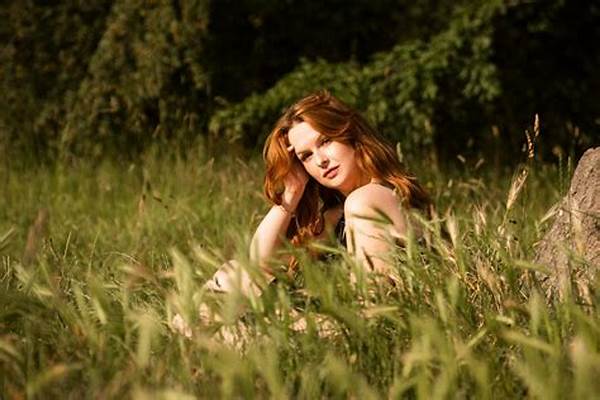Hey there, fellow photography enthusiasts! Today, we’re diving into the fascinating world of portrait photography and the important role ISO settings play in capturing those stunning shots. Whether you’re a newbie or a seasoned pro, understanding how ISO can affect your portraits is crucial. So, grab a cup of coffee and join me as we explore these two exciting topics.
Read Now : Capturing Dynamic Animal Poses
Mastering ISO for Perfect Portraits
When it comes to portrait photography, ISO settings are like the unsung heroes of your camera. They determine how sensitive your camera’s sensor is to light, and getting them just right can make a world of difference. Think of ISO as a balancing act between noise (that pesky graininess you sometimes see) and exposure.
In low-light situations, bumping up your ISO can help you capture well-lit portraits without the need for a flash. However, there’s a catch: higher ISO settings can introduce noise. This is why finding the sweet spot is essential. Many portrait photographers recommend starting with a low ISO and gradually increasing it to avoid unnecessary noise. This way, you’ll capture the natural beauty of your subject without unwanted distractions.
Another cool trick is using ISO settings creatively for artistic effects. For instance, if you’re aiming for a moody or vintage look, experimenting with slightly higher ISO can add a lovely touch of grain to your portraits. Ultimately, mastering ISO settings involves a lot of trial and error, but that’s part of the fun in photography – discovering what works best for you and your style.
Quick Tips for Portraits
1. Understand the Basics: In portrait photography, ISO settings control your camera’s sensitivity to light, affecting exposure and noise.
2. Avoid Overexposure: Start with a low ISO to ensure clear, crisp images without excessive grain.
3. Adapt to Lighting: In low-light scenarios, raise the ISO to capture more light without resorting to flash.
4. Experiment with Effects: Use higher ISO creatively for vintage or artistic impressions in your portraits.
5. Test and Learn: Trial and error is key – keep practicing to hone your style in portrait photography and ISO settings.
Enhancing Your Portraits with ISO
Taking portraits is all about capturing the personality and essence of your subject. ISO settings are your backstage pass to getting the exposure just right. For outdoor portraits on a sunny day, a low ISO setting, like 100 or 200, is your best friend. It ensures your images are sharp and free from unnecessary noise. On the other hand, indoor portraits, especially in dim lighting, call for a more nuanced approach. You may need to bump up your ISO to 800 or even higher to get that perfect shot.
When you shoot portraits, the background also plays a vital role. ISO settings can help you maintain focus on your subject while subtly blurring out the background. By adjusting the ISO, you can control the depth of field and create beautiful bokeh effects that make your portraits stand out.
Ultimately, ISO settings are a powerful tool that every portrait photographer should master. Understanding how they interact with lighting and exposure will empower you to capture stunning portraits, no matter the setting or time of day. So take your camera, experiment with ISO settings, and watch your portraits come to life.
Common Challenges and Solutions
1. Noise Issues: High ISO can introduce noise in portrait photography. To counteract, use noise reduction software.
2. Low Light Struggles: Unable to use flash? Increasing ISO can help, but balance is key to avoid grainy shots.
3. Varying Environments: Changes in light demand ISO adjustments. Practice on the go to adapt swiftly.
4. Blurry Backgrounds: Adjust ISO to control depth of field, keeping subjects sharp.
Read Now : Romantic Outdoor Couple Photography Ideas
5. Static Subjects: With stable subjects, lower ISO is ideal for enhanced clarity.
6. Moving Subjects: Increase ISO in low light to freeze motion without losing focus.
7. Artistic Preference: Higher ISO settings can create mood with a film-like quality in photos.
8. Trial Runs Required: Experimentation is essential to understanding how ISO influences your style.
9. Sensor Limitations: Different cameras have varying handling of ISO; know your gear’s strengths.
10. Post-Processing: Software can correct slight errors in exposure caused by ISO misjudgment.
Understanding Exposure in Portrait Photography
In portrait photography, achieving the right exposure is key to capturing your subject’s natural beauty. ISO settings play a pivotal role here, helping photographers adapt to various lighting conditions. The art of adjusting ISO is about balancing light sensitivity and maintaining image quality. This means avoiding unwanted noise while making sure your subject is well-lit.
Say you’re shooting outdoors on a bright sunny day. A goal in portrait photography is to keep your ISO settings low, so around 100 or 200. This gives clear, crisp images. However, if you’re indoors or under a cloudy sky, you might need to increase your ISO to let in more light. But be cautious – as you increase ISO, the risk of noise creeps in, and you don’t want that grainy look detracting from your subject’s smile or the twinkle in their eye.
Fun with ISO: Capturing Moods and Themes
Okay, let’s talk about playing with ISO in portrait photography. If you’re all about capturing moods, then ISO settings are your best pal. Wanna capture that soft evening light with a bit of grain for a nostalgic vibe? Crank up that ISO a notch! It’s not all about getting the “perfect” shot. Sometimes, embracing the quirks of ISO can add character to your photos.
Here’s the scoop: the beauty of portrait photography lies in its diversity and the stories it tells. ISO settings are just a piece of this puzzle, helping you connect with your subject on a deeper level. By understanding and experimenting with ISO, you’re that much closer to achieving your photography goals. So, go out there and capture some magic. You’ve got this!
Wrapping Up: The Beauty of ISO in Portraits
As we draw this chat to a close, let’s recap the magic that ISO settings bring to portrait photography. At its core, ISO is about adapting your camera to the light around you, ensuring your portraits pop with clarity and style. For aspiring photographers, mastering ISO is a journey of discovery, revealing new ways to present your subject’s personality.
Whether you’re shooting portraits in a variety of settings or playing around with different moods, ISO settings are a vital tool in your photographic arsenal. From the warmth of a sunset to the intimacy of indoor lighting, the right ISO transforms ordinary shots into extraordinary stories. Remember, it’s not just about the technicalities—each adjustment you make tells a unique tale through the lens.
Ultimately, the beauty of portrait photography is its power to freeze a moment in time, letting you connect with your subject on a meaningful level. As you explore the nuances of ISO settings, relish the creative freedom they offer and enjoy the artful journey of capturing life’s diverse expressions. Happy shooting, my friends!



